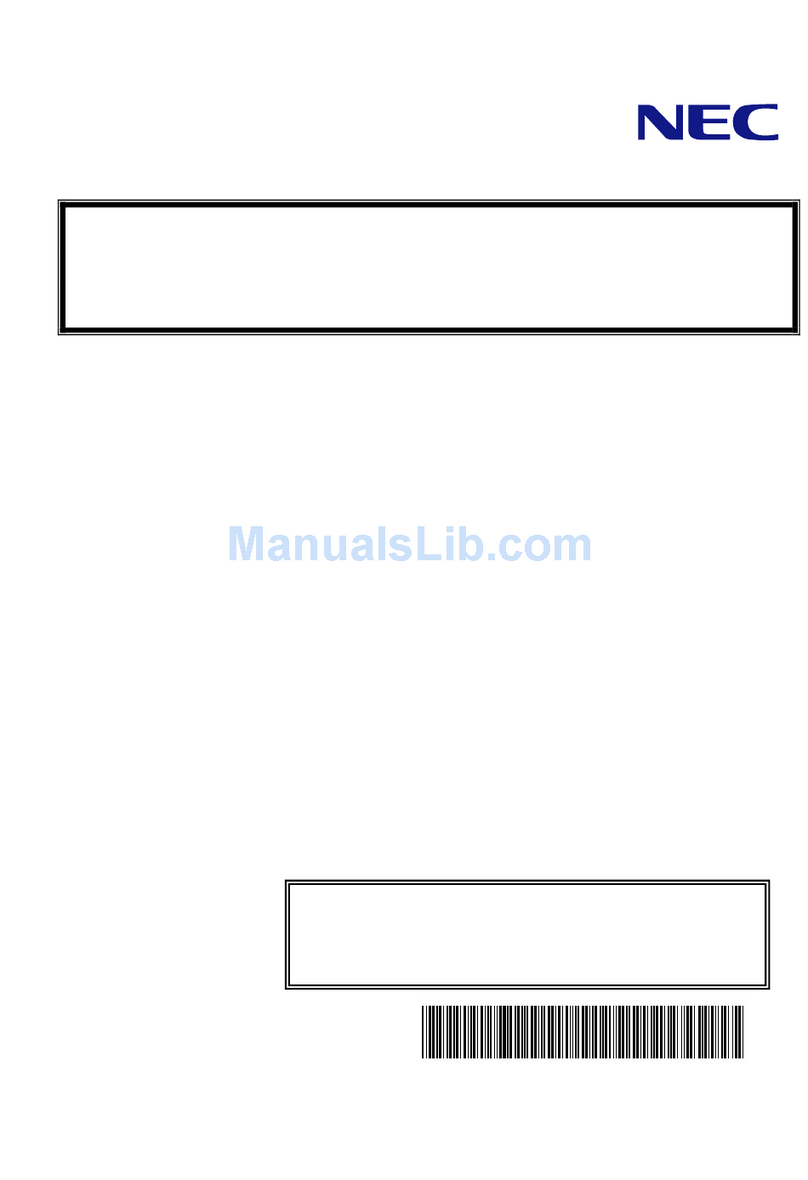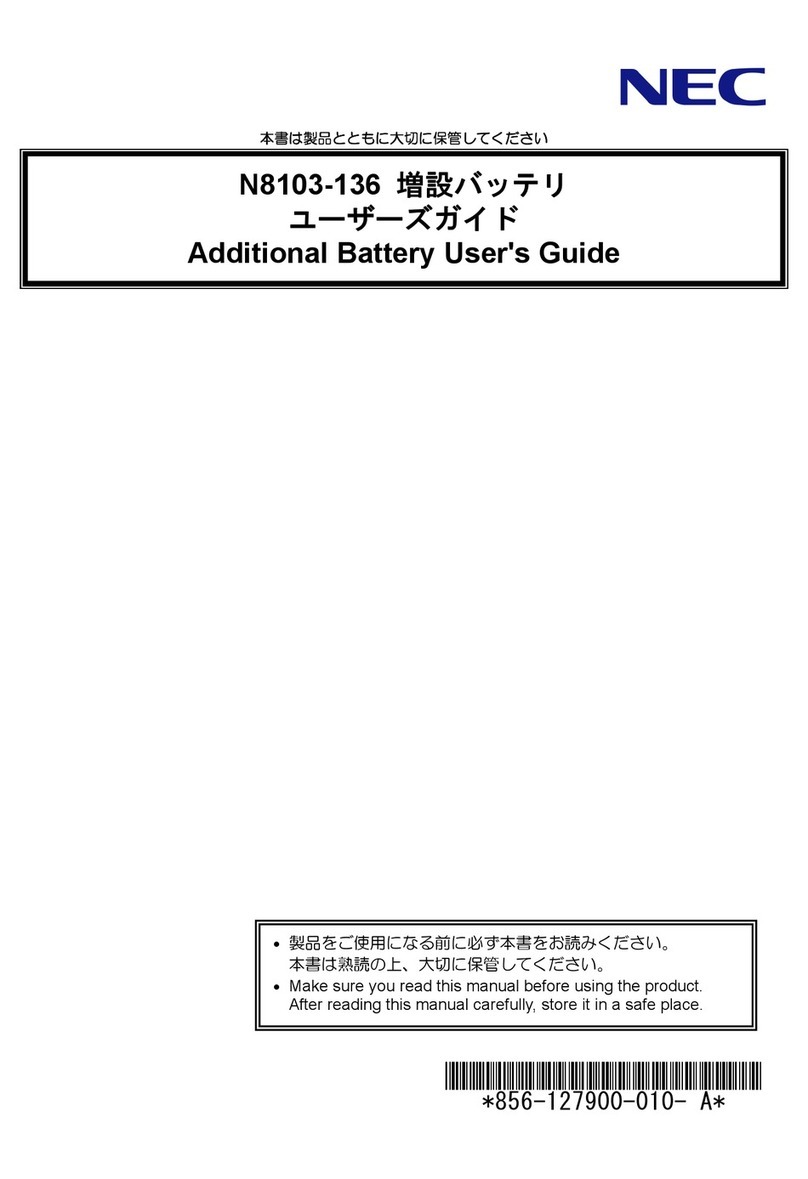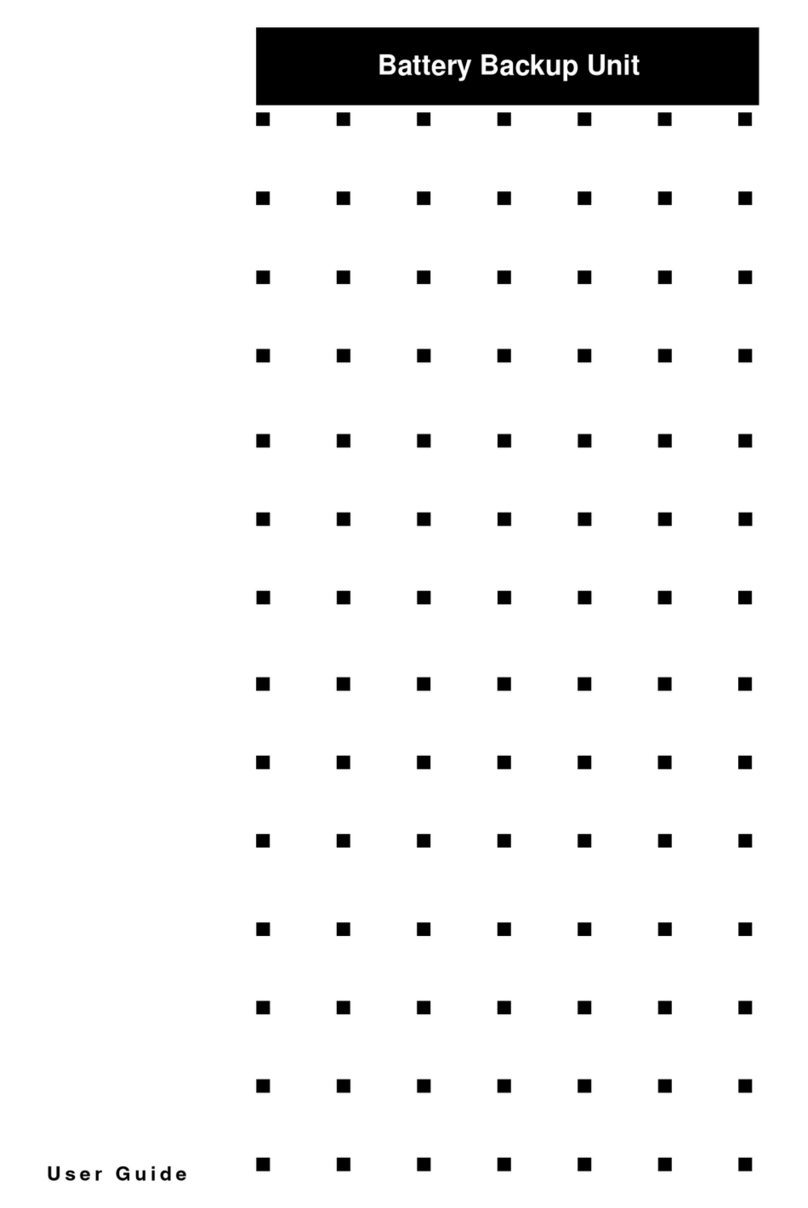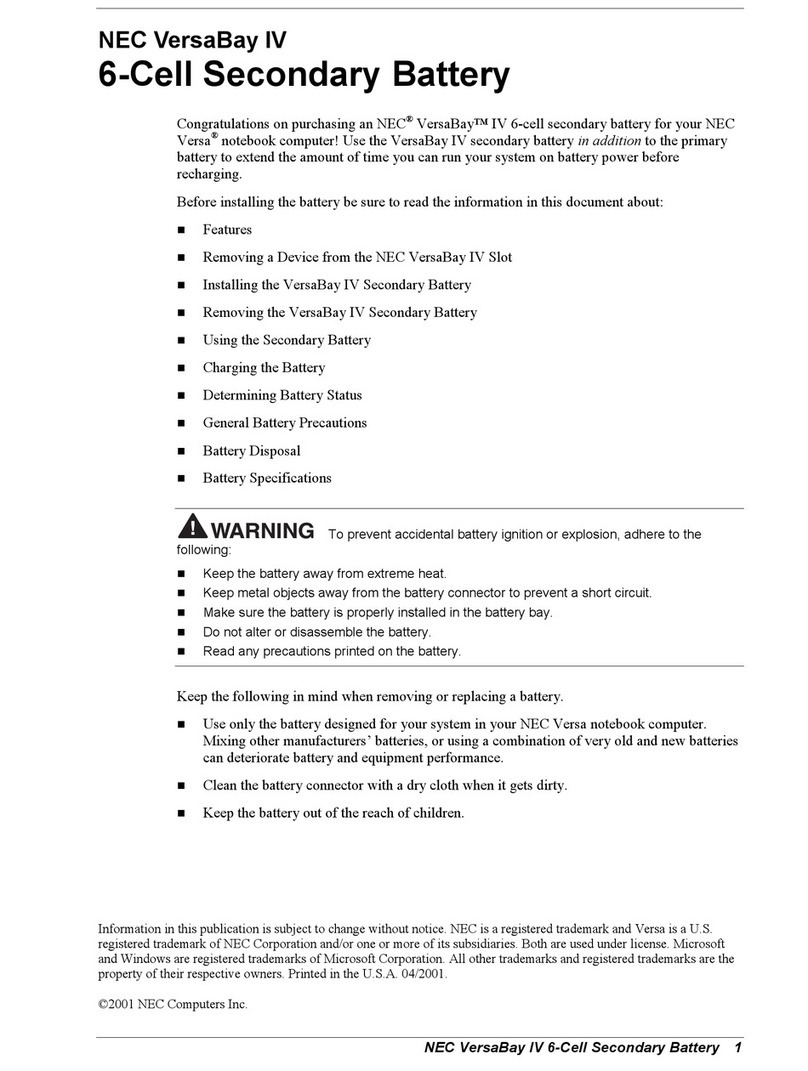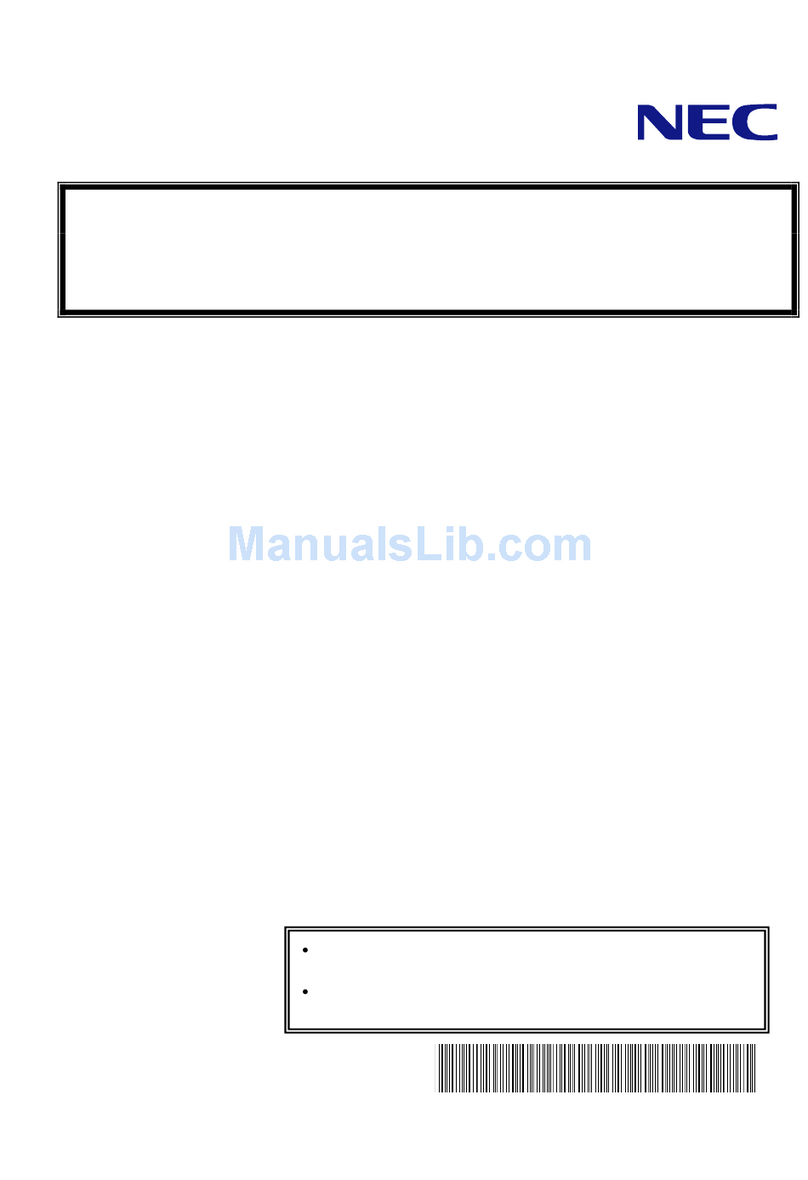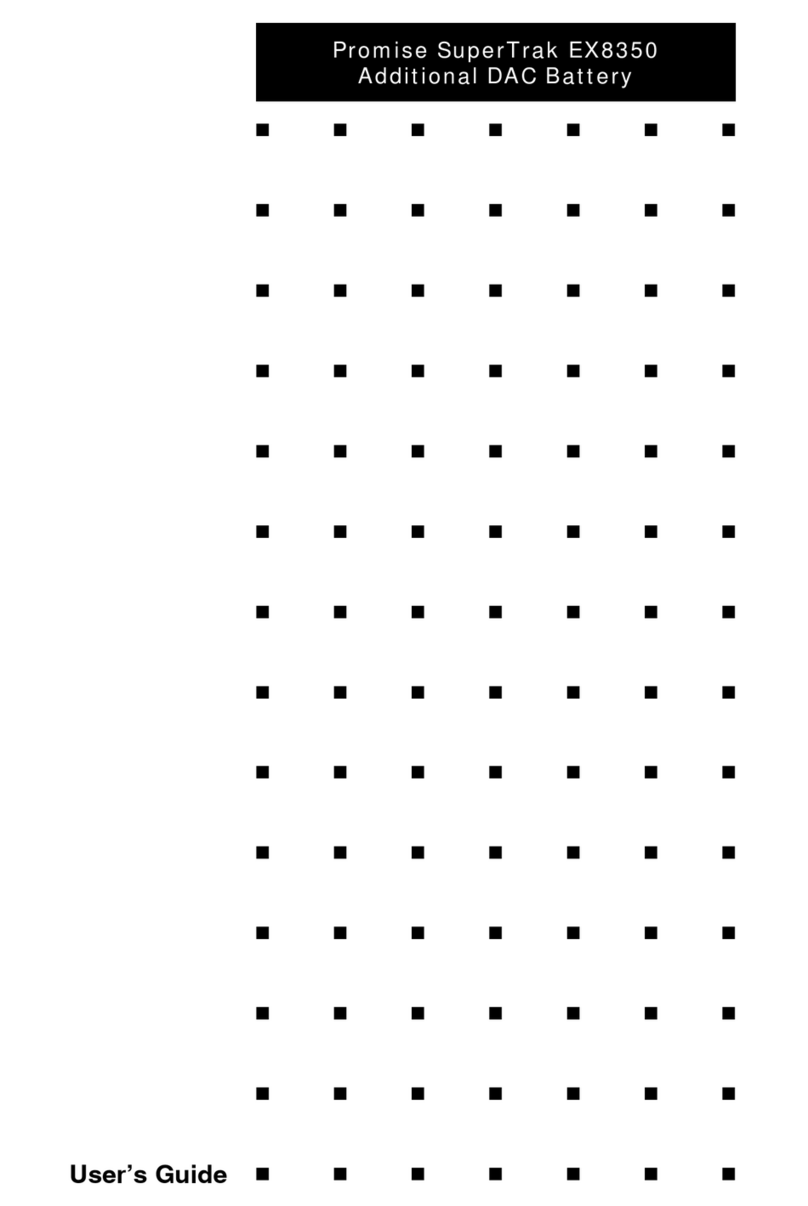
ALM®12V7 s-Series User’s Guide
406014-02EN, Rev. 05 © 2016 NEC Energy Solutions, Inc. All rights reserved. Page 3 of 49
This document contains the proprietary information of NEC Energy Solutions, Inc. (“NECES”) and may not be modified,
reproduced, retransmitted or redistributed, either in whole or in part, for any reason without NECES’ prior written consent.
Contents
Preface .......................................................................................................7
About this Guide ............................................................................................................................. 7
Intended Users................................................................................................................................ 7
Conventions Used in this Guide ..................................................................................................... 7
Notes, Caution, Warning, and Danger Notices ........................................................................ 7
Chapter 1 Introducing the ALM®12V7 s-Series Batteries .................... 9
Overview ......................................................................................................................................... 9
ALM®12V7 s-Series Product Line................................................................................................ 10
Chapter 2 Regulatory Compliance ........................................................ 11
Overview ....................................................................................................................................... 11
Environmental Regulations ........................................................................................................... 12
Transporting Lithium-Ion Batteries................................................................................................ 12
Regulations Overview............................................................................................................. 13
Regulations by Cell/Battery Size ............................................................................................ 13
Following International and U.S. DOT Regulations ................................................................ 13
Chapter 3 Handling, Storage and Installation ...................................... 15
Safety and Handling...................................................................................................................... 15
Mounting ....................................................................................................................................... 16
Battery Configuration Options ...................................................................................................... 16
Wiring Connections ................................................................................................................ 16
Terminal Specifications........................................................................................................... 18
Configuring Batteries in Series Strings................................................................................... 18
Configuring Batteries in a Parallel Group (1S2P up to 4S10P)............................................... 19
Series and Parallel Battery Configuration Warnings and Notices .......................................... 19
Transportation and Storage .......................................................................................................... 21
Operating Environment ................................................................................................................. 21
Disposal ........................................................................................................................................ 22
Chapter 4 ALM®12V7 s-Series Specifications ..................................... 23
Electrical and Environmental Specifications ................................................................................. 23
Physical Specifications ................................................................................................................. 26
Chapter 5 Operation and System Design Considerations .................. 28
Integrated EverSafe™ Battery Protection..................................................................................... 28
Transient Energy Limit ............................................................................................................ 28
Over Current Protection .........................................................................................................28


